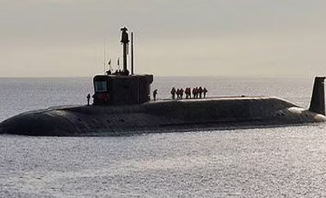India Launches Fourth Nuclear Submarine, S4
India launched its fourth nuclear-powered ballistic missile submarine (SSBN), designated S4, at the Ship Building Centre in Visakhapatnam. This submarine is more advanced than its predecessor, INS Arihant (S2). The launch marks an important step in India’s naval capabilities.
India’s SSBN Program
India’s SSBN program is part of its efforts to strengthen its nuclear deterrent. The first SSBN, INS Arihant, was commissioned in August 2016. It serves primarily as a technology demonstrator under the Advanced Technology Vessel program. Currently operates two SSBNs: INS Arihant and INS Arighaat (S3).
Submarine Specifications
INS Arihant has a displacement of 6,000 tonnes. It is powered by an 83 MW pressurized light-water reactor using enriched uranium. INS Arighaat retains similar specifications but includes technological upgrades. The new S4 has an improved reactor design and is larger, offering enhanced capabilities.
The S4 can carry multiple K-4 submarine-launched ballistic missiles (SLBMs). These missiles have a range of 3,500 km, extending India’s undersea strike capability. The S4 is expected to enter service shortly, following the completion of sea trials for the third SSBN, INS Aridhman (S4).
Nuclear Triad and Deterrence Strategy
India’s nuclear triad was completed in November 2018, when INS Arihant returned from its first deterrence patrol. The triad allows India to launch nuclear weapons from land, air, and sea. This capability is essential for maintaining a credible minimum deterrence (CMD) strategy.
Significance of the K-4 Missile
The K-4 missile, tested in 2020, is crucial for India’s undersea nuclear deterrence. It provides the ability to launch nuclear weapons while submerged, enhancing survivability and strategic reach. The K-4 will be the backbone of India’s underwater deterrent until a 5,000 km range SLBM is developed.
India’s nuclear doctrine is based on CMD and a No First Use (NFU) policy. This means India will not initiate a nuclear strike but reserves the right to respond with massive retaliation if attacked first. The doctrine was formalized following the 1998 nuclear tests at Pokhran-II.
Future Plans
The Government of India has recently approved the construction of two indigenous nuclear attack submarines (SSNs). These hunter-killer submarines are vital for monitoring and securing the Indo-Pacific region. They will complement the existing SSBN fleet and enhance operational capabilities.
The advancements in India’s SSBN program reflect a strategic commitment to bolster national security. With the launch of S4 and the ongoing development of SSNs aims to enhance its deterrent capabilities and maintain stability in the region.
Month: Current Affairs - October, 2024
Category: Defence Current Affairs








